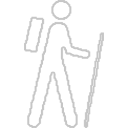

The Lowdown on LoDo, Denver Colorado
About this English self-guided 1h:11m walking tour in Denver
Welcome to the Historic America & UCPlaces audio walking tour of Denver Colorado’s coolest neighborhood - Lower Downtown (LoDo for short).
This tour will lead you on a trek through the heart of a neighborhood that perfectly blends the nostalgic and modern – a great link between Denver’s past & present. Known for its world famous food & beverage scene, lavish hotels, amazing architecture, and riveting history dating all-the-way back to the Gold Rush era, LoDo has something to offer every visitor. On this journey you’ll see where the coldest game in Major League Baseball history was played, gape at one of the grandest train stations in the United States, and step foot inside a haunted brewery. Along the way you’ll visit the largest independent bookstore in the state, see where the mile high city’s milk comes from, and hear the story of Harry Houdini’s most death-defying escape.
We can’t wait to share this neighborhood with you!
To get started, make your way to the intersection of Blake Street & 18th Street. I’ll meet you there.
- Category
-
Language
English
-
Region
North America / USA
- Country
- City



